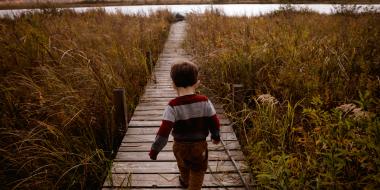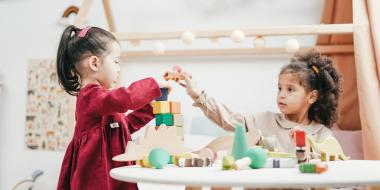co-authored by Domenique Barbaro
As adults we often find ourselves encountering stressful moments and anxieties while navigating our daily lives. It’s important to realize that our little ones go through many of the same types of experiences. Given the growing attention on adversities children face each day, there has been a call for developing new ways to nurture a child's overall health and well-being1. There are many ways we can help our kids cope with these feelings safely and healthily.
As children navigate their day-to-day lives, they can experience difficulty in their relationships with family and friends, life at school, learning, and education. A child’s elevated stress levels can manifest in a range of challenges and unwanted behaviours.1 Building the capacity in children to cope with sticky situations and address their emotions effectively, creates a lifelong ability to manage difficulties constructively.
BECOMING SELF-AWARE
Cultivating awareness of one’s experiences moment to moment is the first step for anyone navigating a stressful situation—including a child. A popular approach for doing that is known as mindfulness. Mindfulness is the practice of deliberately paying attention to your feelings, senses, and emotions without judgement or resistance; it can promote a state of relaxation and wellness. Mindfulness has roots that originate in Eastern meditation practices. Research suggests mindfulness can help improve children’s interpersonal relationships, confidence, optimism, and self-esteem. Since mindfulness is a self-management technique, it can help children play a role in their own growth and development, and empower them to take control of their emotions . Engaging in mindfulness training and activities can assist a child in managing their reactions to emotional challenges, improving impulse control, and strengthening cognitive and attentional abilities.2
There are many approaches to developing mindfulness, including yoga, meditation, breathing exercises, nature walks, and sensory crafts. According to current research on mindfulness for children, immense benefits come from practicing yoga and engaging in mindful breathing.2 Mindfulness activities are quick, simple, and can be fun. They can allow a child to express creativity while entering a calm and safe space with a loved one (and eventually, independently). This can be great for parents too, as it can remind a parent to focus on the present moment during a busy time.
MINDFULNESS ACTIVITIES
Mindfulness Sensory Jars
This is a quick, easy, and fun craft to make with your child. When these jars are shaken, watching the glitter and beads settle can calm and relax the mind during a stressful moment.3 This activity is great since it allows a child to express both their creativity through the craft, and create their very own personalized mindfulness tool that can easily be taken on the go. Here’s how to make one:

Materials:
- Clear plastic bottle/jar with a lid
- Clear gel glue
- Hot water (adult supervision required)
- Glitter and beads
- Food colouring (optional)
Steps:
- Fill your child’s container ¾ full with hot water.
- Add gel glue (for a 33 oz plastic bottle—5 oz glue is best; this will vary depending on the container).
- Add glitter and/or beads to the container.
- Add food colouring (optional).
- Shake it up and watch the glitter fall as a quiet visual experience!
Belly Breathing
Belly breathing, also known as diaphragmatic breathing, can help children navigate stressful and intense emotional moments. Controlled breathing activates the diaphragm and allows the body to relax as it counters the fight or flight response.4 Belly breathing can be used as an introduction to meditation as it teaches the fundamentals of simple breathwork. Breathing exercises are a fantastic way to calm the body in times of high stress.
Steps to Belly Breathing:
- Sit or lay down in a relaxed position.
- Have your child place their hand on their belly and breathe in through their nose until their belly rises.
- Have your child hold their breath for 4 seconds.
- Have your child slowly exhale through their mouth.
- Continue this and add messages such as, “Breathing in, I calm my mind. Breathing out, I smile,” to guide your child’s breathwork.
You can add a visual component to this exercise too. Ask your child to pick their favourite “happy” colour, then coach them to imagine that colour entering their belly with each breath. Picturing their belly “filled” with their favourite colour can help them inhale more completely and fully. Encourage your child to practice this when they are calm at first; the more this technique is practiced, the more easily your child will be able to do belly breathing in any setting they need. This can be done at school, at sports games, recreational activities, and during times of stress at home.
Practicing mindfulness in times of heightened emotions can teach your child healthy coping mechanisms to get through difficult moments. This technique can be carried forward into adolescence and adulthood, and can be used as a method of stress relief or relaxation whenever they need it. It also creates a great opportunity for children to find time to pause and relax with their parents and loved ones.
For references visit ecoparent.ca/TWF/LATESUMMER22
You May Also Like: Helping Your Child To Cope With Anxiety, How Kids' Yoga Builds Grit, How Crying Impacts Children's Mental Health.






